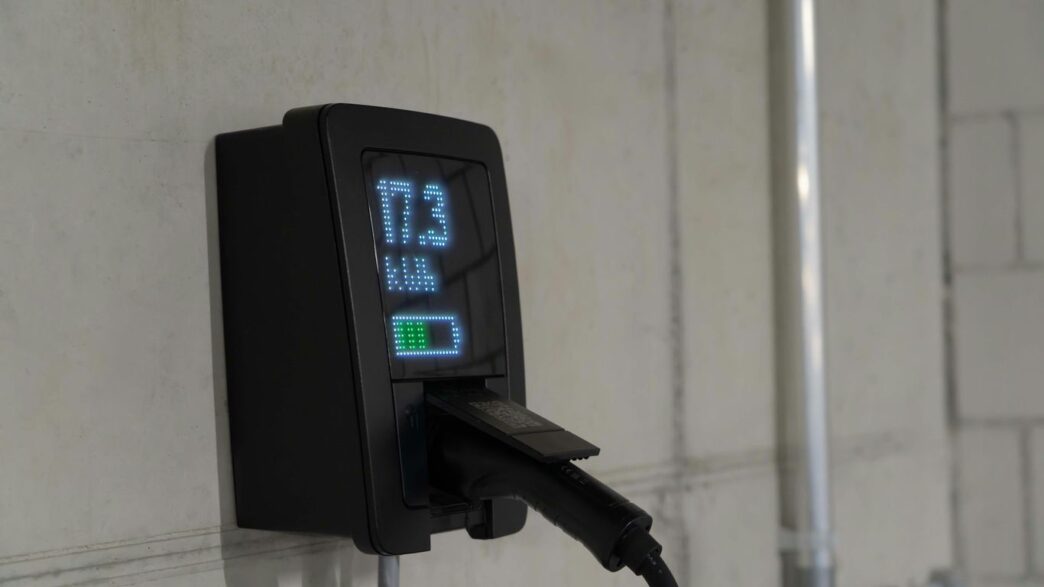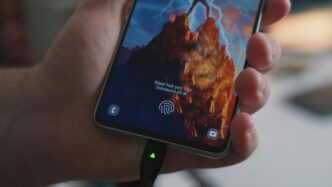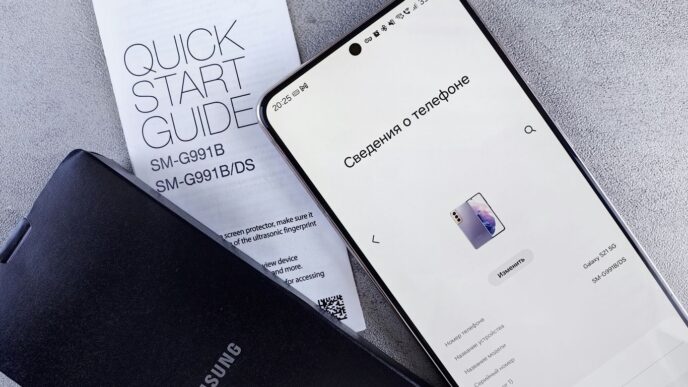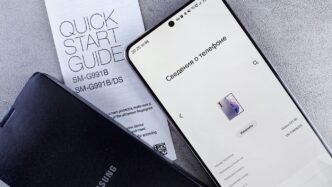It feels like phone batteries are always running low, right? You’re out and about, or maybe just busy at home, and suddenly you need to charge up, fast. The good news is, charging tech has gotten way better. We’re talking about chargers that can juice up your phone in minutes, not hours. But with so many options out there, how do you pick the right one? We’re going to look at what makes a charger fast, what the highest watt phone charger options are for 2025, and how to make sure you’re getting the best charge without messing up your phone’s battery.
Key Takeaways
- Fast charging uses higher wattage (measured in watts) to get your phone powered up quicker. Both your charger and your phone need to support fast charging for it to work.
- When looking for the highest watt phone charger, check what your phone manufacturer suggests. A higher wattage charger means faster charging, but it’s good to balance this with how it might affect your battery long-term.
- Your phone has a limit on how much power it can take. Even if you use a super-high wattage charger, your phone will only draw what it can handle, so picking a charger that exceeds your phone’s max support is usually safe and convenient.
- Wireless charging is getting faster, with some options offering significant speed. However, the actual speed you get also depends on your phone, its case, and the wall adapter you use with the wireless charger.
- Heat is bad for charging. Always charge your phone on a hard, flat surface in a well-ventilated area to prevent overheating and keep your charger working at its best.
Understanding Phone Charging Wattage

So, you’ve got this phone, and it needs juice, right? But how much juice, and how fast does it need it? That’s where wattage comes in. Think of wattage as the "oomph" your charger can deliver. More watts generally means a quicker charge, but it’s not quite as simple as just grabbing the biggest number you see.
What Constitutes Fast Charging?
Fast charging isn’t just a buzzword; it’s about getting your phone from nearly dead to ready-to-go in a much shorter time than your old, basic charger. We’re talking minutes instead of hours for a significant chunk of battery. It’s a lifesaver when you’re rushing out the door or only have a short window to plug in.
The Role of Wattage in Charging Speed
Wattage is basically the power output of your charger. It’s calculated by multiplying the voltage (how much "push" the electricity has) by the amperage (how much electricity is flowing). So, a charger that says "5V/2A" is a 10-watt charger (5 x 2 = 10). A higher wattage charger can push more power into your phone’s battery at once, which speeds things up. Here’s a quick look at common wattages:
| Charger Wattage | Typical Use Case |
|---|---|
| 5W | Standard, slow charging (often included with older phones) |
| 10W | Basic "fast" charging, good for topping up quickly |
| 18W-30W | "Quick Charge" or "Fast Charge" for modern devices |
| 45W+ | High-speed charging, often for flagship phones or laptops |
Compatibility: Charger Meets Device
This is super important. You can’t just plug any charger into any phone and expect the best results, or even safe results. Your phone has a maximum wattage it can accept. If you plug in a 100W charger into a phone that only supports 20W, the phone will only draw 20W. It won’t explode or anything, thanks to smart charging tech, but it also won’t charge any faster than its limit. Conversely, using a charger with too low wattage will just mean slower charging. Always check what your phone supports to get the best balance.
Identifying the Highest Watt Phone Charger
So, you’re looking to get the fastest charge possible for your phone, right? It’s not just about grabbing any charger off the shelf. You’ve got to figure out what your phone can actually handle. The key is matching your device’s capabilities with the charger’s power output.
Manufacturer Recommendations for Optimal Charging
Your phone’s maker usually knows best. They design the phone, so they know what kind of power it likes. Checking the official specs or the little booklet that came with your phone is a good first step. Sometimes, they’ll even recommend specific chargers or wattage ranges. It’s like asking a chef what wine pairs best with their dish – they’ve got the inside scoop.
Balancing Speed with Battery Longevity
This is where things get interesting. More watts usually means a faster charge, which is great when you’re in a rush. But, constantly hitting your battery with super-high wattage might not be the best thing for its long-term health. Think of it like sprinting versus jogging; sprinting gets you there faster, but jogging is easier on your body over time. For everyday charging, especially overnight, a slower, steadier charge might actually help your battery last longer. It’s a trade-off, and you have to decide what’s more important for your daily routine.
Assessing Your Device’s Maximum Wattage Support
This is the technical bit, but it’s important. Your phone has a limit on how much power it can take in. Plugging in a 100W charger won’t magically make a phone that only supports 25W charge four times faster. It’ll just draw the 25W it can handle. So, how do you find this out?
- Check the phone’s specifications: Look up your phone model online or in its manual. Search for terms like "charging speed," "wattage support," or "fast charging."
- Look at the original charger: If you still have the charger that came with your phone, it’s a good indicator of what the manufacturer intended.
- Research charging standards: Knowing if your phone supports standards like USB Power Delivery (USB-PD) or Quick Charge can give you clues about its charging capabilities.
Here’s a general idea of what different wattages mean:
| Wattage | Common Term | Typical Use Case |
|---|---|---|
| 5W | Standard | Basic overnight charging |
| 10W | Fast Charger | Quicker top-ups, good for daily use |
| 18W-30W | Quick Charge / Fast Charging | Significantly reduced charging times |
| 45W+ | Super Fast Charging | For devices that support very high power input, often flagship models |
Top Performing Chargers for 2025
High-Wattage Multi-Port Solutions
When you’ve got more than one gadget that needs juice, a multi-port charger is your best friend. These aren’t just about having extra ports; they’re about delivering serious power across all of them. Think of the Anker Prime Charger (100W, 3 Ports, GaN). This thing is a beast, offering a total of 100 watts. What’s cool is that one of its USB-C ports can push out the full 100W on its own, which is enough to get a laptop like a 14-inch MacBook Pro halfway charged in about 30 minutes. It’s got two USB-C ports and one USB-A, so you can charge your phone, tablet, and maybe even a small laptop all at once, without everything crawling along.
- Anker Prime Charger (100W, 3 Ports, GaN): Great for charging multiple devices simultaneously. Can deliver full 100W from a single USB-C port.
- GaN Technology: This means the charger is smaller and runs cooler, which is a big plus.
- Versatile Ports: Includes both USB-C and USB-A for broad compatibility.
Advanced Charging Technologies Explained
Beyond just raw wattage, the tech inside the charger makes a huge difference. We’re talking about things like GaN (Gallium Nitride), which lets chargers be smaller and more efficient. Then there’s USB Power Delivery (USB-PD) and Qualcomm’s Quick Charge. These aren’t just buzzwords; they’re protocols that let the charger and your device talk to each other. They figure out the fastest and safest way to charge without overheating your battery. For example, Qualcomm’s Quick Charge 5 can handle up to 100W and is designed to recharge a typical phone battery in about 15 minutes, all while keeping heat in check. It’s all about smart power delivery, not just brute force.
Chargers Optimized for Specific Devices
Sometimes, the best charger is one made with your specific phone brand in mind. Samsung’s Super Fast Wireless Charger, for instance, is built to get the most out of their Galaxy phones. It even has a little fan to keep things cool during those rapid charges. For OnePlus users, sticking with their proprietary SuperVooc charging, like the 80W speed on the OnePlus 12, usually means using the charger that came in the box or one specifically designed by OnePlus. While generic chargers are getting better, these brand-specific ones often fine-tune the charging process for maximum speed and battery health for that particular device. It’s like getting a custom tune-up for your phone’s battery.
- Samsung Super Fast Wireless Charger: Ideal for Samsung Galaxy devices, includes cooling fan.
- OnePlus SuperVooc Chargers: Offers very high wired charging speeds, often best with the included charger.
- Google Pixel Chargers: Support USB PD 3.0, with specific wattage limits for Pixel 8 (18W) and Pixel 8 Pro (23W).
- Motorola TurboPower: Available in various wattages, with higher-end models supporting up to 125W for specific phones like the Edge series.
Exploring Wireless Charging Capabilities
Wireless charging is super convenient, right? Just plop your phone down and it starts juicing up. But there’s more to it than just that. Let’s break down what makes wireless charging tick and how to get the most out of it.
The Evolution of Wireless Charging Speeds
Remember when wireless charging felt like a snail’s pace? Things have changed a lot. Back in the day, you’d be lucky to get 5W, which was barely faster than trickle charging. Now, most modern phones can handle at least 15W wirelessly, and some even push past 50W with proprietary stands. It’s not quite as fast as the best wired chargers, but the gap is definitely shrinking. The technology is always getting better, so expect those speeds to keep climbing.
Matching Wireless Chargers to Your Phone’s Needs
So, how do you pick the right one? First off, check if your phone even supports wireless charging. Most new ones do, but it’s always good to confirm. The standard to look for is called Qi (pronounced "chee"). If both your phone and the charger are Qi-certified, they’ll play nice together.
Here’s a quick rundown:
- Check your phone’s specs: Does it support wireless charging? What’s its maximum wireless wattage?
- Look for Qi certification: This is the universal standard that ensures compatibility.
- Consider the power adapter: The wireless charger needs a strong wall adapter to actually deliver fast speeds. Don’t assume the one that comes with your phone is enough – you might need a separate, higher-wattage adapter (like 30W or more) to get the best performance from your wireless pad.
Factors Affecting Wireless Charging Performance
It’s not just about the charger’s advertised wattage. A few things can slow things down or even cause issues.
- Heat: Wireless charging naturally creates some heat. Too much heat can slow down charging and, over time, hurt your battery. Good chargers have built-in cooling or temperature control to manage this. You’ll notice your phone might feel a bit warm, but it shouldn’t be scorching hot.
- Foreign Objects: Some chargers have a feature that stops them from working if they detect something like keys or coins on the pad. This is a safety thing to prevent damage.
- Alignment: For the best connection, your phone needs to be lined up correctly on the charging pad. Some chargers, especially those with magnets like Apple’s MagSafe, make this much easier.
- The Wall Adapter: Like we mentioned, a weak wall adapter means a weak charge, no matter how fancy the wireless pad is. Make sure you’re pairing it with a capable USB-C power brick.
Ensuring Safe and Efficient Charging Practices
So, you’ve got that super-fast charger, and you’re excited to juice up your phone in record time. That’s awesome! But sometimes, going all-out with speed can actually mess with your phone’s battery life over time, or even cause the charger to overheat. It’s not just about getting power into your device; it’s about doing it the smart way. Think of it like driving a car – you can floor it everywhere, but that’s not great for the engine in the long run. Charging is similar. A few simple habits can make a big difference in how long your phone lasts and how well your charger performs.
The Impact of Heat on Charging Performance
Heat is kind of the enemy of good charging. When your phone and charger work together to transfer power, they both get a little warm. That’s totally normal. But if that heat can’t escape, things start to go wrong. Your charger will actually slow itself down on purpose to avoid getting too hot. This means your phone takes longer to charge, and all that extra heat isn’t doing your phone’s battery any favors either. It can wear it out faster.
To keep things cool:
- Find a hard, flat spot: Always put your charger on a desk, a nightstand, or a similar surface. These allow air to move around.
- Avoid soft surfaces: Don’t charge your phone on your bed, a couch, or a fluffy rug. These materials trap heat like a blanket.
- Give it space: Make sure the charger isn’t crammed into a tight spot with no airflow. A little breathing room goes a long way.
Smart Habits for Healthier Battery Charging
We all used to just plug our phones in overnight and forget about them. Turns out, leaving your phone on the charger for eight hours straight isn’t the best thing for the battery. It can put extra strain on it. A better approach? Charge your phone in shorter bursts throughout the day. A quick top-up while you’re working or making dinner is often enough to keep you going. This way, your battery doesn’t have to sit at 100% for ages, which is generally healthier for it in the long run. Plus, your phone is more likely to be ready when you need it, which is super handy if you’re always on the move.
Choosing the Right Charger for Different Devices
It’s easy to think ‘more watts equals better,’ but that’s not always the case. Your fancy new phone might need a high-wattage charger to get that super-fast speed, but what about your wireless earbuds or smartwatch? They have much smaller batteries and don’t need nearly as much power. Using a super-powerful charger on a device that can’t handle it is just overkill. It’s also important to remember that your phone itself decides how much power it will take. If your phone can only accept 15W wirelessly, plugging it into a 30W charger won’t make it charge any faster. The trick is to match the charger’s power to what your device actually needs and what you’re using it for. Sometimes, a slower 5W or 10W charger is perfectly fine, especially for overnight charging or for those smaller gadgets. It generates less heat and is gentler on the battery.
Navigating Charging Standards and Protocols
So, you’ve got your eye on a super-fast charger, but what does all that technical talk actually mean? It’s not just about the wattage number; different charging standards and protocols play a big role in how quickly and safely your device powers up. Think of them as the languages that your charger and phone use to talk to each other about power. If they don’t speak the same language, you might not get the speed you’re expecting.
Understanding USB Power Delivery (USB-PD)
USB Power Delivery, or USB-PD, is a big deal in the charging world, especially with USB-C ports becoming standard. It’s a flexible standard that lets devices communicate their power needs and allows chargers to supply just the right amount of juice. The latest versions can push out a lot of power, enough for laptops and other bigger gadgets, not just phones. It’s designed to be smart, adjusting power on the fly to keep things efficient and safe.
- PD 2.0: This was a solid step, supporting up to 100W, but it was a bit rigid. Devices had to pick from set voltage and current levels.
- PD 3.0: This version got smarter with Programmable Power Supply (PPS). It lets devices request power in tiny, specific increments, which means less wasted energy and less heat. Many phone fast-charging features, like Samsung’s Super Fast Charging, use PD 3.0 with PPS.
- PD 3.1: This is the power-up champ, pushing the limits to 240W. It’s a game-changer for charging things like gaming laptops or high-res monitors through a single USB-C cable.
Quick Charge Technology and Its Benefits
Quick Charge is another popular fast-charging standard, developed by Qualcomm. You’ll often see it on Android phones, though it’s not exclusive to them. Like USB-PD, it’s all about increasing the wattage to charge devices faster. The different versions of Quick Charge offer progressively higher power outputs and smarter charging.
| Quick Charge Version | Max Wattage | Key Features |
|---|---|---|
| Quick Charge 3.0 | 18W | Intelligent voltage selection (INOV) for better efficiency |
| Quick Charge 4 / 4+ | Up to 100W | USB-PD compatible, improved thermal management |
| Quick Charge 5 | Up to 100W (peak) | Significantly faster charging, advanced safety features |
The main benefit of Quick Charge is simply getting your phone back to a usable battery level much quicker than older charging methods. It’s about convenience and reducing downtime.
Proprietary Charging Standards
Beyond the universal standards like USB-PD and Quick Charge, many manufacturers have their own special charging technologies. Think of brands like OnePlus with Warp Charge or OPPO with VOOC. These are often designed to be super-fast, sometimes even faster than the general standards, but they usually require specific chargers and cables from that same brand. While they can offer impressive charging speeds, you’re kind of locked into their ecosystem. It’s worth checking if your device uses one of these, as you might need their specific charger to get the absolute fastest speeds possible.
Wrapping Up Your Charge
So, finding the right charger really comes down to what your phone can handle and what you need it for. Going for the absolute highest wattage isn’t always the best move if your phone can’t use it, and constant super-fast charging might not be great for your battery long-term. Think about your daily routine – do you need a quick boost before heading out, or is charging overnight just fine? Matching the charger’s power to your device and your lifestyle is the smart way to go. It means your phone gets the juice it needs without any fuss, keeping it running smoothly for longer. Happy charging!
Frequently Asked Questions
What does ‘wattage’ mean for a phone charger?
Wattage, or ‘W’, tells you how much power a charger can send to your phone. Think of it like water pressure in a hose. A higher wattage charger, like a 65W one, is like a stronger hose that can fill up your phone’s battery much faster than a lower wattage charger, such as a 5W one.
Can I use a charger with more watts than my phone needs?
Yes, you generally can! Most modern phones are smart enough to only take the power they need, even if the charger can provide more. So, using a 100W charger with a phone that only needs 30W is usually safe. Your phone will just charge at its maximum speed, not the charger’s.
Does a faster charger hurt my phone’s battery?
Using a fast charger all the time *might* cause a little more wear on your battery over a very long time because it can generate more heat. However, most new phones have built-in systems to manage this and keep the battery healthy. For daily use, it’s usually fine, but for overnight charging, a slower charger might be slightly better for battery health in the long run.
What’s the difference between USB-PD and Quick Charge?
USB Power Delivery (USB-PD) and Quick Charge are like different languages that chargers and phones use to talk to each other about how much power to send. USB-PD is a widely used standard that works with many devices, including laptops and tablets. Quick Charge is another popular standard, often used by phones with Qualcomm chips, that also allows for very fast charging.
How do I know if my phone supports fast charging?
The best way to know is to check your phone’s user manual or the manufacturer’s website. They will usually list the charging speeds your phone supports, often mentioning terms like ‘Fast Charging’, ‘SuperCharge’, ‘Quick Charge’, or ‘USB-PD’ along with the wattage (like 25W, 45W, or 65W).
Does my phone case affect wireless charging speed?
Yes, it can! Really thick cases or cases with metal parts can block the wireless charging signal or trap heat, which slows down charging. For the fastest wireless charging, it’s best to use a thin case or remove it altogether, and make sure your phone is lined up correctly on the charging pad.














